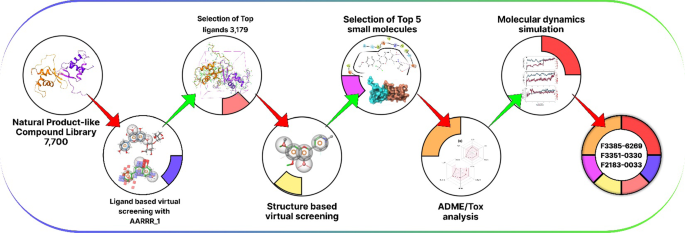Introduction:
Nature has long been a valuable source of inspiration for drug discovery, with countless life-saving medicines derived from natural products. Traditional drug discovery efforts have heavily relied on screening natural compounds for their therapeutic potential. However, the vast potential of natural products still remains largely untapped. In recent years, the concept of Natural Product Based Libraries (NPBLs) has gained prominence, providing a platform to explore the rich biodiversity of natural compounds for drug discovery. In this article, we will delve into the significance of NPBLs and their potential impact on the field of pharmaceutical research.
Harnessing Nature’s Pharmacy:
Natural products, such as plants, marine organisms, and microorganisms, produce an incredible diversity of chemical compounds with unique structures and biological activities. Many of these compounds have evolved to interact with specific biological targets, making them ideal candidates for drug development. Natural products have provided the foundation for numerous pharmaceutical drugs, including antibiotics, anticancer agents, and cardiovascular medications.
Understanding Natural Product Based Libraries:
A Natural Product Based Library is a curated collection of compounds derived from natural sources. These libraries consist of purified natural compounds or structurally modified derivatives that retain the original biological activities of the natural product. The primary goal of creating NPBLs is to systematically explore the vast chemical space offered by natural products and identify bioactive molecules with therapeutic potential.
Advantages of Natural Product Based Libraries:
Chemical diversity: Natural products are known for their extensive structural diversity, which far exceeds that found in synthetic compound libraries. By utilizing natural compounds as a starting point, NPBLs offer a broader representation of chemical space, increasing the likelihood of discovering novel drug candidates with unique mechanisms of action.
Biologically validated starting points: Natural products have a long history of use in traditional medicine and have been extensively studied for their biological activities. With a Natural Product Based Library, researchers start with compounds that have already demonstrated biological effects, reducing the risk of pursuing inactive or ineffective compounds. This can lead to more efficient and targeted drug discovery efforts.
Access to privileged scaffolds: Natural compounds often possess complex and unique structural motifs that are not readily accessible by synthetic chemistry. These privileged scaffolds can serve as starting points for the development of structurally diverse lead compounds or the synthesis of compound libraries with focused structural modifications.
Synergy and multitarget effects: Natural products are known for their ability to target multiple biological pathways simultaneously, leading to synergistic effects. By exploring NPBLs, researchers can uncover compounds with multitarget activities, offering potential treatments for complex diseases that require a holistic approach.
Challenges and Considerations:
Despite the numerous advantages, NPBLs also present challenges in drug discovery. Natural products often have complex structures that can be difficult to synthesize or modify for optimization. Furthermore, their limited availability in nature may pose challenges for scalability and commercialization. However, advancements in synthetic methods and biotechnology, including fermentation and genetic engineering, are addressing these challenges, enabling access to previously inaccessible natural compounds and their derivatives.
Conclusion:
Natural Product Based Libraries offer a valuable platform for drug discovery, allowing researchers to tap into the vast wellspring of natural compounds. By harnessing the chemical diversity and biological activities of natural products, NPBLs provide an opportunity to discover novel lead compounds with unique mechanisms of action and therapeutic potential. The synergy between traditional medicine, natural product chemistry, and modern drug discovery approaches has great potential to drive innovation and contribute to the development of effective and safe pharmaceuticals.
As we continue to explore the rich biodiversity of our planet, NPBLs offer a pathway to unlocking nature’s pharmacy and uncovering new treatments for a range of diseases. With advancements in technology and a deeper understanding of natural product chemistry, the future holds great promise for NPBLs as an important tool in the ongoing quest for innovative drug discovery.
References:
Harvey, A. L., Edrada-Ebel, R., Quinn, R. J. (2015). The re-emergence of natural products for drug discovery in the genomics era. Nature Reviews Drug Discovery, 14(2), 111-129.
Newman, D. J., Cragg, G. M. (2016). Natural products as sources of new drugs over the 30 years from 1981 to 2010. Journal of Natural Products, 75(3), 311-335.
Toure, B. B., Hall, M. D. (2017). Natural product-based libraries: A rich source for novel bioactive scaffolds. Natural Product Reports, 34(6), 681-710.




